There’s been lots of chatter about the production problems and delays affecting Star Trek: Discovery. But the latest series in the franchise is no different than its predecessors. What’s new is the existence of social media.
Star Trek productions have always been fraught with challenges to varying degrees over the past fifty years. Reading about the development and filming of the various series is part of the fun of being a fan. I discovered Star Trek more than 30 years ago when I was not even a teenager, and I’m still learning new things about the franchise.
Discovery is no doubt going to prompt new fans to investigate the series that began it all and the ones that followed it. There’s no shortage of books chronicling the voyages of Gene Roddenberry’s vision of the future, but there are several that stand out in terms of detail and thoroughness that should be at the top of anyone’s list.
These Are The Voyages
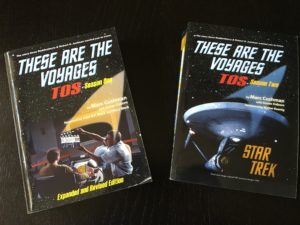
In fact, there is a book for each of the original Star Trek’s three seasons for a total of nearly 2,000 pages. They are the best proof that Discovery is not unique when it comes to growing pains. Social media would have had a field day with the tumultuous production of the series in 1960s.
Authored by Marc Cushman, These Are The Voyages pull together detailed production documents, memos and interviews that actor Walter Koenig has described has the definitive story of the making of the original Star Trek. In provides an incredibly balanced view of the first incarnation while shattering many myths about the series.
For fans of classic Trek, These Are The Voyages are a must-read, and those interested in TV production would find them fascinating as well.
The Making of Star Trek
This book is often mentioned by fans and writers of later Trek series as being a treasure trove of information and insight. It’s hard to come by now, and for some reason I let myself part with my copy, but if you can find it, hold on to it. It’s considered the first of its kind in terms of Star Trek reference books thanks to the multiple points of view from a wide range of contributors, everyone from studio executives to fans.
Inside Star Trek: The Real Story
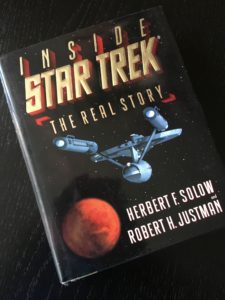
Written by Herbert F. Solow and Robert H. Justman, both executives who worked on the series, Inside Star Trek: The Real Story is the first book I read that didn’t sanitize the making of the original series the way most official reference books published at the time.
It’s a fascinating book from two insiders that complements Cushman’s series and is full of production art and behind-the-scenes photographs, primarily from Justman’s personal collection. And like These Are the Voyages, the book also debunks many of the myths that had arisen about Star Trek over the previous 30 years.
Star Trek: The Fifty-Year Mission
Like These Are the Voyages, The Fifty-Year Mission is more than one book. Authors Edward Gross and Mark A. Altman split 50 years of Star Trek history in two. The first volume is dedicated to the original series through to its feature film era, and the second covers the subsequent series and the J.J. Abrams films.
Described as an “oral history” of the franchise, it pulls together decades of interviews by Gross and Altman, who as journalists wrote about Star Trek for more than 30 years for publications such as Starlog. It’s a no holds barred look at 50 years of the franchise from the many cast, crew and writers involved in its many incarnations.
The Star Trek Encyclopedia
When it comes to books that pull together everything about the Star Trek universe, there’s no better tome than Mike Okuda’s Star Trek Encyclopedia, updated and re-released for the franchise’s 50th year.
Make no mistake, this is an encyclopedia in the truest sense, split into two heavy hardbound volumes, assembled by someone who worked on four of the series and continues be a steward of Star Trek continuity, most recently with his wife Denise on the Star Trek: The Next Generation BluRay remastering and documentaries.
It’s not something you can carry to the beach with you, that’s for darn sure.
They are many more books that are well-worth reading. Allan Asherman’s Star Trek Compendium is a great companion while watching episodes of the original series. Larry Nemecek’s Star Trek: The Next Generation Companion does the same. Writer David Gerrold dives into the making of his well-loved “The Trouble with Tribbles,” in a single book, and takes a broader look at the original show with The World of Star Trek.
Star Trek Lives! tells the story of how a canceled TV series became a cult classic in the 1970s and the rise of Star Trek conventions, while many of the biographies and autobiographies of cast members over the years provide differing perspectives. The relatively recent Star Trek: The Complete Unauthorized History by Robert Greenberger is a great visual and chronological overview of the franchise.
Star Trek: Discovery will both enjoy and endure a great deal of scrutiny in real-time thanks to the Internet, but eventually it too will be the subject of many books that dive deeper into its production, and hopefully its longevity and success.
Gary Hilson is a freelance writer with a focus on B2B technology, including information technology, cybersecurity, and semiconductors.
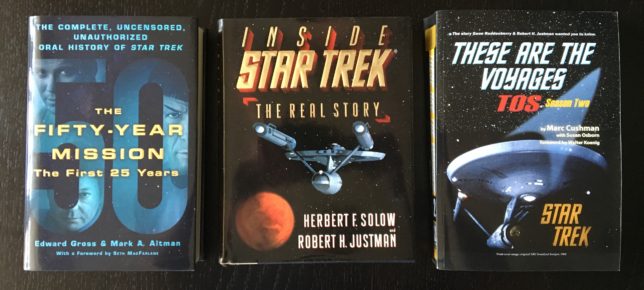
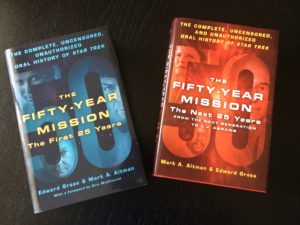
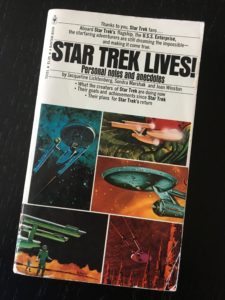

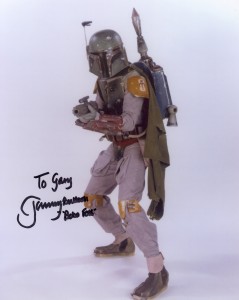
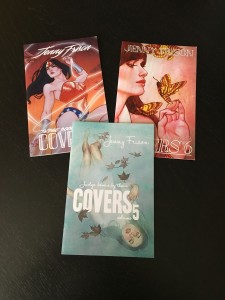
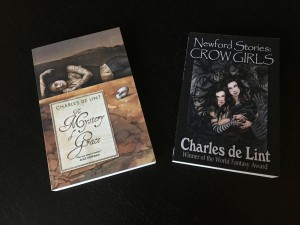

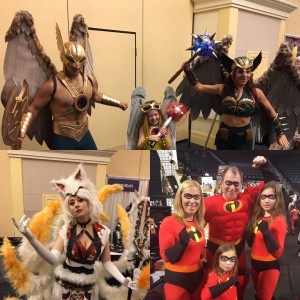
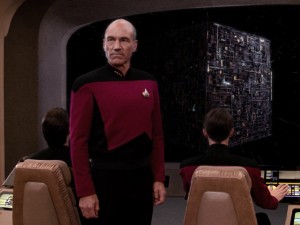

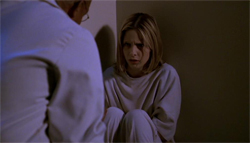 Buffy the Vampire Slayer is a lot more complex than the title of the show suggests, and after six years, the heroine of this series has collected a lot of baggage, emotional and otherwise.
Buffy the Vampire Slayer is a lot more complex than the title of the show suggests, and after six years, the heroine of this series has collected a lot of baggage, emotional and otherwise. I stayed up late enough last night to catch Roger Ebert’s review of the new X-Men movie and it reminded me why I never listen to movie reviewers most of the time: they have no idea how to review a genre film.
I stayed up late enough last night to catch Roger Ebert’s review of the new X-Men movie and it reminded me why I never listen to movie reviewers most of the time: they have no idea how to review a genre film.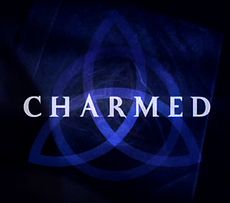 I never thought I’d ever enjoy a television show with Aaron Spelling’s name attached to it, but I decided to give Charmed a chance.
I never thought I’d ever enjoy a television show with Aaron Spelling’s name attached to it, but I decided to give Charmed a chance. Since its debut, I’ve always tried to like Star Trek: Voyager. It’s not as if I don’t like the show, but for the most part, I’ve been disappointed in it.
Since its debut, I’ve always tried to like Star Trek: Voyager. It’s not as if I don’t like the show, but for the most part, I’ve been disappointed in it.